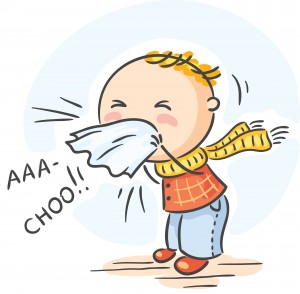 Over the years there has been a big debate over the “25 square feet of mold” definition in the TMARR (Texas Mold Assessment and Remediation Rules). The rule was designed to protect the consumer, but there have always been mold remediation companies who have skated around the rule, by telling a homeowner or building owner that there was less than 25 square feet, they could do the job “cheaper” and save them some money or that they would “not have to get the state involved.” But what the remediation contractors were not telling their customers was that by getting around the rules, their work would not be overseen by or examined by a Texas Department of State Health Services Mold Regulations Inspector or a Licensed Mold Assessment Consultant. I am not saying that all of them who were doing this are bad Mold Remediation Contractors, because that would not be true. What I am saying is that, like always, there are some good and some bad, some who are trying to help and some who are trying to make more money from unsuspecting consumers.
Over the years there has been a big debate over the “25 square feet of mold” definition in the TMARR (Texas Mold Assessment and Remediation Rules). The rule was designed to protect the consumer, but there have always been mold remediation companies who have skated around the rule, by telling a homeowner or building owner that there was less than 25 square feet, they could do the job “cheaper” and save them some money or that they would “not have to get the state involved.” But what the remediation contractors were not telling their customers was that by getting around the rules, their work would not be overseen by or examined by a Texas Department of State Health Services Mold Regulations Inspector or a Licensed Mold Assessment Consultant. I am not saying that all of them who were doing this are bad Mold Remediation Contractors, because that would not be true. What I am saying is that, like always, there are some good and some bad, some who are trying to help and some who are trying to make more money from unsuspecting consumers.
I am very happy to tell you that the Texas Department of State Health Services recently issued a rule clarification on the TMARR Frequently Asked Questions page (See full text below). In this Q&A, they clearly explain that a Texas Licensed Mold Remediation Contractor MUST follow the Texas Mold Rules even if there is only 5 square feet of visible mold. This is consumer protection! If you hire a licensed Mold Remediation Contractor, this is your guarantee that you, as a homeowner or building owner, will get your mold remediation project done correctly and completely. This forces the remediation contractor to follow the rules no matter what.
Now a Licensed Remediation Contractor must follow a Mold Remediation Protocol on every Mold Remediation job, no matter how big or how small. Only a Texas Licensed Mold Assessment Consultant can write a Mold Remediation Protocol. If you have a mold problem or think you might have a mold problem, make sure you call a Licensed Mold Assessment Company first!!! Make sure you are protected!
 “Minimum Area Exemption” in Section 295.303(b) of the TMARR
“Minimum Area Exemption” in Section 295.303(b) of the TMARR
Question: Section 295.303(b) of the Texas Mold Assessment and Remediation Rules (TMARR) states, “A person is not required to be licensed under this subchapter to perform mold remediation in an area in which the mold contamination for the project affects a total surface area of less than 25 contiguous square feet.” Does this mean that a licensed Mold Remediation Contractor (MRC) is exempt from all the mold rules if hired for a project where the mold contamination affects a total surface area of less than 25 contiguous square feet?
Answer: No. This exemption only applies to persons who are not licensed to conduct mold remediation, and was meant to allow small projects to be handled more simply and economically. A licensed MRC performing a small mold remediation project (less than 25 contiguous square feet) is not exempt from the TMARR. Regardless of the size of the area affected by mold contamination, if a licensed MRC is hired by the consumer, the MRC must follow the TMARR. This includes developing a work plan which follows a protocol developed by a licensed Mold Assessment Consultant (MAC).
Discussion: All licensees agree to work in compliance with the mold rules as a condition of obtaining a mold license (Section 295.304(b)(2)). In addition, consumers, whom the law was intended to protect, expect a licensed company they hire to follow the rules. If a consumer chooses to hire a licensed MRC to perform a small mold remediation project (less than 25 contiguous square feet of mold contamination), there is a reasonable expectation that the job will be performed in accordance with the rules regardless of the size of the project. In fact, a Certificate of Mold Damage Remediation (CMDR) may only be signed and issued by a MRC “for projects performed under the rules” (See Sections 295.302(6) & 295.327(b)). Non-licensees may not sign or issue a CMDR.
Licensed MRCs should inform customers that a licensed MAC must first prepare a protocol before the MRC can develop a work plan and begin the remediation. This is true regardless of the size of the project. The MRC, after ensuring that the consumer has been provided the Consumer Mold Information Sheet, may only perform a project in accordance with the TMARR, regardless of size. The MRC must respect a consumer’s choice to hire non-licensed people to do these small projects under the applicable exemption from the licensing requirement, and may not represent that the licensed MRC can perform the work without following the requirements of the TMARR
History of this issue: In the past, the department informally allowed MRCs to be exempt from the TMARR on projects where less than 25 contiguous square feet of mold contamination was involved. This allowance was made to enable MRCs to compete with non-licensees for those jobs that fall under the exemption from the licensing requirement. In light of more recent developments, including several complaints the department has received from homeowners, the department has reviewed the TMARR and has identified no provision that allows a licensee to bypass the rules in any situation.



 I get these questions a lot: what if the mold is in my walls, and how will you find it. First, let me say- good question! This is a common concern and you are not alone, so let me see if I can explain. It is not uncommon for us to get a call that goes something like this: I have been feeling ill for a while now and I just cannot shake it; I don’t see any mold but we did have a roof leak a few months ago (insert your water intrusion issue here). This is where we will discuss your issues and specifics of where you are having issues and what your concerns are. During this discussion the question inevitably comes up, “But if you can’t see the mold, how do you know it’s there?”
I get these questions a lot: what if the mold is in my walls, and how will you find it. First, let me say- good question! This is a common concern and you are not alone, so let me see if I can explain. It is not uncommon for us to get a call that goes something like this: I have been feeling ill for a while now and I just cannot shake it; I don’t see any mold but we did have a roof leak a few months ago (insert your water intrusion issue here). This is where we will discuss your issues and specifics of where you are having issues and what your concerns are. During this discussion the question inevitably comes up, “But if you can’t see the mold, how do you know it’s there?”
 Being in the environmental consulting field, we encounter all sorts of situations and all types of people. We regularly work with homeowners who believe they may have a problem and help them to set forth a course of action when issues are found, we assist people after cleanup projects have occurred in verifying that work was performed correctly, we work on behalf of property owners to ensure their tenants environments are safe, and we oftentimes are called in by the tenants themselves who believe they are at risk due to mold and moisture issues that are not being properly addressed by the property owner. Regardless of who our client is in any of these situations, we follow the same guidelines and provide recommendations in an unbiased manner.
Being in the environmental consulting field, we encounter all sorts of situations and all types of people. We regularly work with homeowners who believe they may have a problem and help them to set forth a course of action when issues are found, we assist people after cleanup projects have occurred in verifying that work was performed correctly, we work on behalf of property owners to ensure their tenants environments are safe, and we oftentimes are called in by the tenants themselves who believe they are at risk due to mold and moisture issues that are not being properly addressed by the property owner. Regardless of who our client is in any of these situations, we follow the same guidelines and provide recommendations in an unbiased manner.
 You have decided to have your mold concerns diagnosed by a professional. In a sense you have decided to take your home to the doctor. You are expecting a complete diagnosis so that you know how to move forward in resolving your concerns. Usually, the complete diagnosis will include an investigation and testing.
You have decided to have your mold concerns diagnosed by a professional. In a sense you have decided to take your home to the doctor. You are expecting a complete diagnosis so that you know how to move forward in resolving your concerns. Usually, the complete diagnosis will include an investigation and testing.


 Every day I hear from potential clients, real estate agents, property managers, and the like asking me if there is still a “mold problem” and/or do indoor mold allergies really affect people? The next question usually goes down the road asking about ”toxic” mold, and whether only those molds with mycotoxins will cause allergy issues or health problems. The short answer is yes indoor mold allergies can and will affect a person’s health. The notion that only “toxic” mold causing these issues is not accurate.
Every day I hear from potential clients, real estate agents, property managers, and the like asking me if there is still a “mold problem” and/or do indoor mold allergies really affect people? The next question usually goes down the road asking about ”toxic” mold, and whether only those molds with mycotoxins will cause allergy issues or health problems. The short answer is yes indoor mold allergies can and will affect a person’s health. The notion that only “toxic” mold causing these issues is not accurate.



